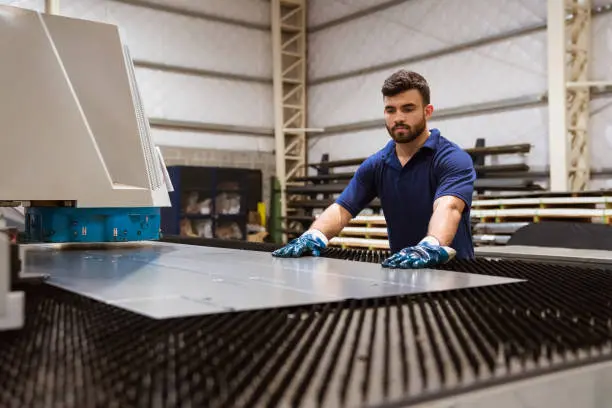In an ever-changing environment of manufacturing- and construction-related activity, efficient use of materials is considered a major factor that helps to reduce costs and improve sustainability. If waste reduction is achieved during fabrication, be it for materials like sheet metal in Houston or otherwise, it can make a big difference in project efficiency. In this regard, consumption efficiency becomes the prime efficiency driving waste reduction from the supply chain—strong Steel and pipe supply networks—into project production.
Understanding the Sources of Waste in Metal Fabrication
Wastes can come from metal fabrication processes at any stage. Excess offcuts, erroneous cutting or bending, inappropriate storage, and over-ordering are all ways unused material can be wasted. Waste arises chiefly from poor planning or simply outdated equipment that does not yield with maximum efficiency. Figuring out the problem areas is the first step toward countering the waste.
Planning and Design: The Heart of Waste Reduction
Design and planning are among the foremost hindrances to all other forms of waste reduction. CAD programs now allow the fabricators to optimize their layouts concerning the primary metal shop or material yielding the lowest residue left over. It is wise for manufacturers to think through sizing and planning of components to achieve maximum efficiency through all sheets or sections of any metal that they have taken into consideration for use.
Cutting Right Is Cutting Smart
Modern cutting methods are laser cutting, plasma cutting, and waterjet cutting, all of which ensure high precision and low waste. Such systems, besides generating cleaner cuts, help reduce the generated scrap. Also, the use of advanced machinery leads to greater capability of cutting more complicated shapes without requiring excess material.
Standardization of Materials Sizes and Dimensions
Standardization definitely forms an important part to achieve waste minimization. By designing products or components that use common material sizes, fabricators can do away with so much need for custom cutting that produces unnecessary scrap. Wherever possible, conformity of drawings with standard supplier dimension will ensure more economic use of material and faster procurement.
Recycling and Re-Use of Scrap/Waste Materials
No amount of planning can remove scrap entirely. However, the idea is to try and ensure that it does not simply get thrown away. Scrap in metals is sometimes collected and sorted either for in-house recycling or sold out to recycling companies. In addition, that is what is done: to utilize scrap pieces in smaller works or prototypes, thus maximizing value and the reduction in environmental impact concerning fabrication.
Suppliers Are a Partner to Reduce Waste
Vendors do have a certain influence in minimizing waste. The collaboration between the metalliferous suppliers and fabricators would be to request the supply of materials in sizes cut precisely to their requirements with a view to minimizing on-depth cutting on site and left-over scrap. Alternatively, suppliers can assist with suggesting other types of materials or grades to achieve better yields while wasting less of the materials in processing.
Lean Principles
Lean manufacturing is all about increased efficiency, continuous improvement, and the reduction of waste in all forms. When it comes to metal fabrication, applying lean principles would require analysis of every step of the processes for inefficiencies, including work layout, materials handling reduction, or greater inter-team communications to make sure effective use of materials.
Material Storage and Handling
Improper storage leads to damaged materials before fabrication occurs, so once again, waste. Sheet metals can be bent, corroded, or scratched if proper storage measures have not been adhered to. Proper storage measures, including climate control and covering, promote quality control of materials and prevent any losses.
Training Together with Work Force Engagement
It is the ability of the personnel that makes any wastage reduction possible. Staff training relating to handling material, cutting, and assembly includes specification on minimizing errors that result in scrap. By involving workers in the detection of inefficiencies, a culture of efficiency can be formed with a collective responsibility towards waste minimization.
Measuring and Monitoring Waste Levels
If you cannot measure, you cannot improve. When a system is established for tracking material use and scrap generation, the fabricators will be able to see trends and continuously target remedial action on problem areas. Regular audits should be made with respect to waste generation as their output will give somewhere intermediate of insight that suggests where improvements can be made and how effectively.
Environmental and Economic Impacts of Waste Eradication
Cutting down on waste generates dividends toward his economic end but earns paths toward environmental benefits. Less scrap means less raw material will need to be extracted and processed, with an accompanying reduction in the carbon footprint of manufacturing operations. On the other hand, economically, the maximization of material yield enhances the product margin and provides a basis for market competitiveness.
Waste Eradication in Metal Fabrication: The Future
Digital manufacturing, artificial intelligence, and automation are promising increased efficiencies in the metal fabrication industry. Applying waste manufacturing systems allow real-time monitoring of production; consequently, automatic adjustments will be made working toward waste reduction. The wider availability of these technologies will make waste reduction enormously integral to fabrication activities.
Frequently Asked Questions
The nature of wastes in fabrication? How can they be controlled or reduced by suppliers?
The suppliers can supply materials pre-cut to the exact dimensions, suggest alternative sizes that make better uses of yield, and work with the fabricators to match order quantities with the project’s requirements.
Is all fabrication waste metal recyclable?
Most of the metal scrap, which includes steel, aluminum, and copper, is recyclable. However, coatings, contamination, or mixed materials may require some additional processing for recycling.
What does technology do for waste reduction?
Modern technologies improve waste disposal through enhanced design by CAD; precision and monitoring through laser cutting; and automation.
Does reducing waste decrease costs?
Mostly yes, because less waste means lower material costs and disposal fees. And more efficient production leads to more profits.




